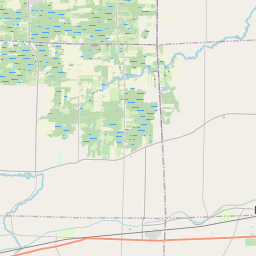Park and Harbor Streets
Historical marker location:
Wilson, New York
( Marker is at the intersection of Harbor Street (New York State Route 18) and Park Street, on the left when traveling north on Harbor Street.)






© OpenStreetMap contributors
Loading...
Searching for other points of interest within 3 miles of this location.The oldest standing lighthouse in New York State is the Montauk Point Lighthouse, which was completed in 1796 and is located on the eastern tip of Long Island. It is also the fourth-oldest active lighthouse in the United States.
About Niagara County
Niagara County Timeline
Niagara County, located in western New York, has a rich history dating back thousands of years. The area was originally inhabited by Native American tribes, including the Iroquois, Seneca, and Tuscarora. They utilized the region's abundant natural resources and lived in harmony with the land. European exploration of the area began in the 17th century with French explorers, followed by British and American settlers.
In the 18th century, the area was an important battleground during the French and Indian War, with both British and French forces vying for control. The British ultimately gained control of the region, and it became part of the Province of New York. Following the American Revolution, Niagara County was established in 1808 as one of the original counties of the state.
The construction of the Erie Canal in the early 19th century played a significant role in shaping the county's history. The canal opened up trade and transportation routes, leading to increased settlement and economic growth. The Niagara Falls became a popular tourist attraction, drawing visitors from all over the world.
Throughout the 20th century, Niagara County experienced industrial development, particularly in the manufacturing and chemical industries. However, the area also faced challenges such as economic downturns and environmental concerns. Efforts have been made in recent years to revitalize the region's economy and promote sustainable practices.
Today, Niagara County continues to be a vibrant area with diverse industries, cultural attractions, and natural beauty. It remains a popular destination for tourists, with attractions like Niagara Falls, historic sites, and wineries. The county's history is a testament to the resilience and adaptability of its residents, who have continued to shape and define the region over the centuries.
In the 18th century, the area was an important battleground during the French and Indian War, with both British and French forces vying for control. The British ultimately gained control of the region, and it became part of the Province of New York. Following the American Revolution, Niagara County was established in 1808 as one of the original counties of the state.
The construction of the Erie Canal in the early 19th century played a significant role in shaping the county's history. The canal opened up trade and transportation routes, leading to increased settlement and economic growth. The Niagara Falls became a popular tourist attraction, drawing visitors from all over the world.
Throughout the 20th century, Niagara County experienced industrial development, particularly in the manufacturing and chemical industries. However, the area also faced challenges such as economic downturns and environmental concerns. Efforts have been made in recent years to revitalize the region's economy and promote sustainable practices.
Today, Niagara County continues to be a vibrant area with diverse industries, cultural attractions, and natural beauty. It remains a popular destination for tourists, with attractions like Niagara Falls, historic sites, and wineries. The county's history is a testament to the resilience and adaptability of its residents, who have continued to shape and define the region over the centuries.
Niagara County Timeline
This timeline provides a glimpse into the major events and milestones that have shaped the history of Niagara County, New York.
- 1678 - French explorer René-Robert Cavelier, Sieur de La Salle claims the Niagara region for France
- 1721 - The French establish the first trading post in the area, known as Fort Niagara
- 1764 - British forces capture Fort Niagara during the French and Indian War
- 1781 - The Sullivan Expedition passes through the region during the American Revolution, destroying Native American villages
- 1783 - The Treaty of Paris is signed, ending the American Revolution and ceding the region to the newly-formed United States
- 1808 - Niagara County is established as a county in New York State
- 1829 - The Erie Canal is completed, connecting the Great Lakes to the Atlantic Ocean and bringing increased trade and development to the region
- 1856 - The Niagara Falls Suspension Bridge, the first bridge across the Niagara River, is completed
- 1885 - The Niagara Power Company begins generating electricity using the Niagara Falls, marking the beginning of the region's role in hydroelectric power
- 1927 - The Water Pollution Control Laboratory is established in Niagara County, becoming a leader in water pollution research
- 1956 - The construction of the Niagara Power Project begins, later becoming one of the largest hydroelectric power plants in the United States
- 1996 - The Niagara Wine Trail is established, promoting the region's growing wine industry
- 2003 - The Seneca Niagara Casino opens, bringing tourism and gaming to the area